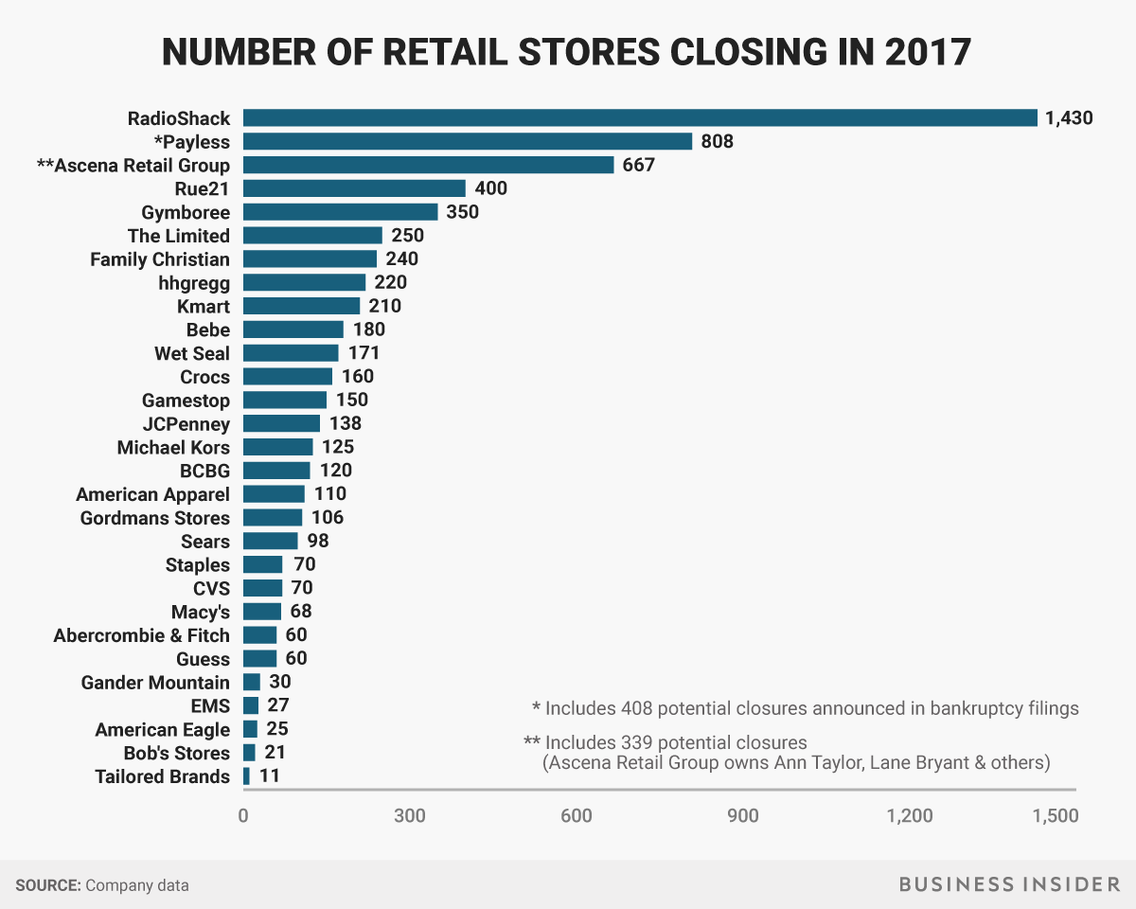
Why Retail Businesses Must Make Service Innovation Their Top Priority
Why Retail Businesses Must Make Service Innovation Their Top Priority
Few industries have evolved as rapidly in the 21st century as the consumer retail industry. Retail organizations face new challenges every day as technology contributes to market upheaval but also facilitates new possibilities for service innovation that were mere pipe dreams just a few years ago. Retail businesses that expect to remain relevant and strengthen their brand presence in the coming years must look for creative ways to enhance the service experience for their customers. In order to prevent a repeat of 2017 retailers will have to enhance the customer experience, or risk losing more ground to ecommerce.
Brick-and-mortar retailers need to distinguish themselves from online-only sellers
It’s been a tough decade for many of the most prominent brick-and-mortar retail companies in the world. Scores of industry giants who were once thought to be untouchable began closing hundreds of stores and laying off thousands of workers. Casual news observers would be hard pressed not think that a new era dominated by online mega-retailers is beginning.
It is hard for traditional retailers to compete on the grounds of price and convenience. More modest e-commerce businesses can typically pass cost savings from the lack of rent, labor, overhead, etc. on to the customers, and mega-retailers such as Amazon have developed massive economies-of-scale advantages.
However, that doesn’t mean that there is no longer a place for retail stores in this economy. In fact, recent trends show that customers are going to retail stores specifically because they offer service experiences that they can’t get online. Sephora has done a great job of creating personalized experiences for customers – marrying online and offline engagement strategies – using tools like augmented reality to allow customers to try on different looks via their phone. Shoppers are just being more deliberate about the stores they’re choosing to shop in, which is why the onus is on retail businesses to give them reasons to visit the store.
Any business can benefit from innovating their customer experience
The benefits of service innovation transcend factors such as industry, company size, and market. It doesn’t matter whether you sell t-shirts or tablets; you can transform your retail business by giving your customers unique service experiences that they can’t get anywhere else. Walmart through the use of in-store self-service kiosks has reduced the return process to 60 seconds and pickups to as fast as 45 seconds.
The possibilities enabled by fostering a great service culture are within any retail company’s reach.Running a retail business means dealing with dozens or hundreds of different realities that are either completely or somewhat out of your control: supply chain issues, government regulations, materials sourcing, etc. But the types of service experiences you deliver to your customers is something that is always within your control. Commit to the idea that innovating the customer service process is your responsibility in a rapidly-evolving market, and do so by using any means available to you.
Service-enhancing technology keeps getting less expensive
One of these available means is technology, which has quickly upended what is possible when it comes to fostering the brand/customer relationship. Mobile devices and social media have changed the game so completely that it’s difficult to remember what life was like before you could communicate with your customers in this way.
There are two notable things about the digital revolution as it relates to retail businesses. The first is that it benefits both the consumer and the brand, as long as it is used effectively. Just think about the power of a mobile app with push notifications: customers can be immediately notified when a product they’ve viewed has gone on sale. Meanwhile, companies can use location services to provide personalized experiences to customers in a store.
The second important development is that the barrier to entry for digital technology keeps getting lower. With a modest investment, any retail company can hire developers to create an innovative app, incorporate interactive tablets throughout the in-store experience to guide guests, and maintain a value-added social media presence across multiple platforms.
Physical retail companies can benefit from big data too
The emergence of big data is in large part driving the push for retail service innovation. Companies now have access to more customer information that at any time in history, and consumers are proving increasingly willing to share this information through numerous channels.
It’s up to innovative retail companies to use this data responsibly to deliver exceptional service experiences. Consider a case such as the luxury menswear retailer Alton Lane. Their stores are fitted with body scanning technology that takes a customer’s precise measurements, which can then be used to craft a unique made-to-measure garment.
Customers come back time and time again for great experiences
Here’s one area where retail companies can take a cue from their B2B counterparts. The best B2B businesses understand that their products aren’t really the draw. Instead, it’s their ability to show the buyer how their product scratches an itch.
Relationships on the consumer-facing side are often built not this same principle. Many retail leaders think their product is unique and without peer, but consumers will look for substitutes for even the best quality products if their service expectations aren’t being met.
The positive side of this is that it’s still possible to build, real, lasting relationships with consumers through the use of singular service experiences. These are the ways for you to distinguish yourself from the competition and give your customers something that they can’t easily find elsewhere on the market.
Personalization is not just the standard of the future; it’s already arrived
Service innovation and personalization are two sides of the same coin in the current retail environment. It’s no longer good enough for companies to simply rely on customer segment data; they have to deliver customized experiences that forge a deeper, more meaningful relationship with the consumer.
Many hospitality-driven companies have pushed personalization even further in the past few years, such as Disney, who developed wristbands for park guests embedded with RFID chips that stored guest data. Retail companies can also take advantage of mobile technology to provide personalized experiences that reward consumers for sticking with a brand over time.
Related Posts:
https://sambahreini.com/2014/10/differentiation-will-keep-offline-customers-from-going-online/
https://sambahreini.com/2015/11/what-brick-and-mortar-can-learn-from-amazons-storefront-in-manhattan/


